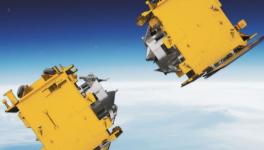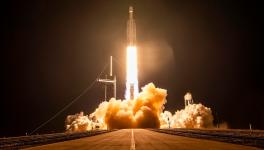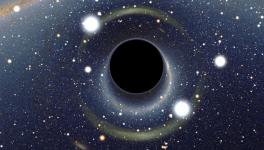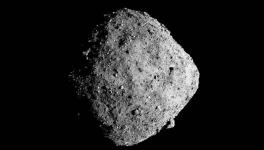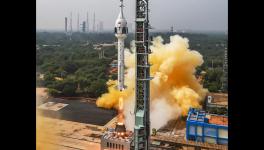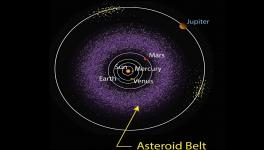India’s Sun Mission: Where is Aditya L-1 and how is it Doing?
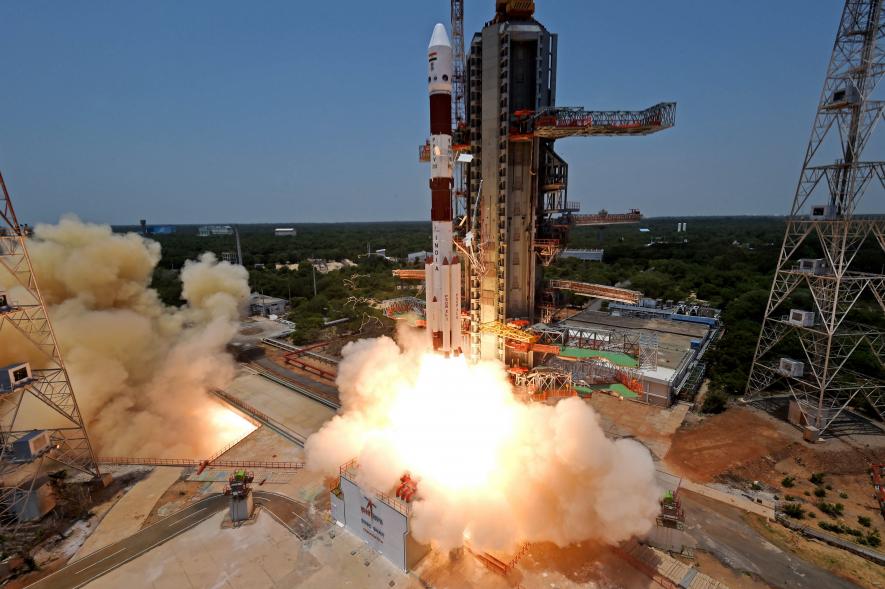
ISRO's launch vehicle PSLV-C57 rocket carrying India's first solar mission, 'Aditya-L1', lifts off from the Satish Dhawan Space Centre, in Sriharikota, Saturday, Sept. 2, 2023. Image Courtesy: PTI
The first space-based Indian mission to study the Sun, the Aditya L-1 mission, was launched on September 2 from the Satish Dhawan Space Center at Sriharikota, Andhra Pradesh. It seems to be well on its trajectory to reach the destination. According to the latest statement of the Indian Space Research Organisation (ISRO) chief, S Somnath, the Aditya L1 is likely to reach the L1 point by mid-January.
In his statement on October 15, the ISRO chief was quoted as saying, “It is working very well. Currently, it takes almost 110 days to travel from Earth to the L1 point. So, by the middle of January, it will reach the L1 point. Then at that point, we will do the insertion into the Lagrange Point. That is called the halo orbit. It's a big orbit."
The destination of Aditya L-1 is a point known as the L-1 point, and it will reach there within a time of 110 days after launch. Aditya L-1 will revolve around the Earth for 16 days to gain the velocity required to accomplish its journey. During this period, the satellite will be confined to Earth-bound orbits and shall undergo five manoeuvres in total. Spacecraft manoeuvre is the changing of the orbit by using the propulsion systems.
It was launched with the help of the rocket PSLV-C57. The PSLV (Polar Satellite Launch Vehicle) is a launch vehicle of India, and it was successfully launched in October 1994 for the first time.
The ISRO said the Aditya L-1 spacecraft escaped the sphere of Earth’s influence on September 30 on its trajectory to the L1 point. It also said that the fifth manoeuvre was performed on October 6. “A Trajectory Correction Manoeuvre (TCM), originally provisioned, was performed on October 6, 2023, for about 16 s. It was needed to correct the trajectory evaluated after tracking the Trans-Lagrangean Point 1 Insertion (TL1I) manoeuvre performed on September 19, 2023,” it added.
“TCM ensures that the spacecraft is on its intended path towards the Halo orbit insertion around L1,” ISRO said.
What is L-1?
L-1 stands for Lagrange Point 1. The Lagrange Point is the location in space where the gravitational points of two celestial bodies cancel out each other. This means that an object kept at such a point will become relatively stable concerning both celestial objects.
NASA (National Aeronautics and Space Administration) writes about Lagrange Points saying, “Lagrange points are positions in space where objects sent there tend to stay put. At Lagrange points, the gravitational pull of two large masses precisely equals the centripetal force required for a small object to move with them. These points in space can be used by spacecraft to reduce fuel consumption needed to remain in position.”
There are five such Lagrange points for the Sun-Earth system, which is depicted in the following image by NASA:
The L-1 point is important for the Sun-Earth system. It provides an uninterrupted view of the Sun, and for this reason, L-1 is now the point in space for four other spacecraft circling it. Aditya L-1 has become the fifth such spacecraft.
Aditya L-1’s Journey:
On September 2, the PSLV-C57 took Aditya L-1 off successfully. After a flight duration of 63 minutes and 20 seconds, the Aditya L-1 spacecraft was successfully injected into an elliptical orbit of 235x19500 km around the Earth, according to ISRO.
Aditya L-1 will stay at a distance of nearly 1.5 million km from the Earth. It is directed towards the Sun; the distance it stays from Earth is just 1% of the total Earth-Sun distance. From here, Aditya L-1 will study the outer atmosphere of the Sun. It will not approach the Sun any closer from this distance, nor will Aditya L-1 ever land on the Sun.
What Aditya L-1 Aims For?
Aditya L-1 has several scientific objectives to accomplish after reaching its destination. It aims to examine the Sun’s corona, the outermost atmosphere of the Sun, and its heating mechanism. The mission also aims to get into the physics of the CME (Coronal Mass Ejection), which is the expulsion of electrons, ions and magnetic field from the corona.
The mission further aims to study the chromosphere, the second layer of the Sun’s corona. Apart from these, Aditya L-1 will also attempt to study the “drivers for space weather origin, composition and dynamics of solar wind,” as per ISRO.
Get the latest reports & analysis with people's perspective on Protests, movements & deep analytical videos, discussions of the current affairs in your Telegram app. Subscribe to NewsClick's Telegram channel & get Real-Time updates on stories, as they get published on our website.









